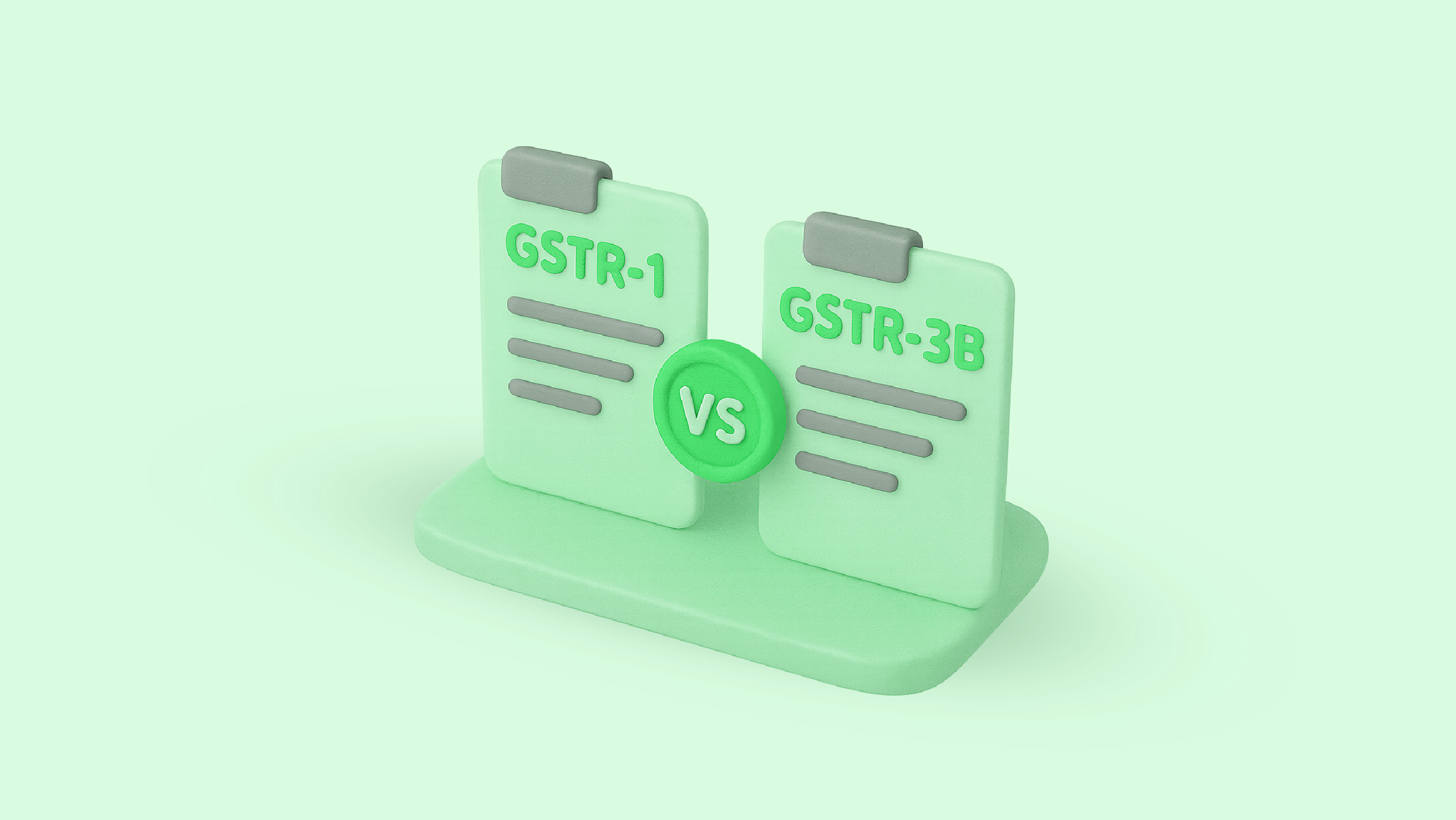Filing GST returns is an essential part of business compliance—but before you get started, you need to understand the GST registration requirements. Whether you’re a small retailer, a service provider, or a large enterprise, registering for GST is the first step toward filing returns. Keeping your GST filings accurate and timely helps you avoid penalties and ensures your input tax credit flows smoothly.
This blog walks you through the GST return forms and the documents required for each. It also touches upon some practical ways to stay ready for GST filing throughout the year.
Understanding GST Return Filing
Every registered taxpayer is required to file GST returns based on their turnover and business type. Some file monthly, while others follow a quarterly schedule under the QRMP scheme. Regardless of the frequency, the returns capture details of outward supplies (sales), inward supplies (purchases), and the tax payable or refundable.
Filing on time not only keeps you compliant but also allows you to claim input tax credit (ITC) without disruption. The GST filing procedure is largely digital, but having the right documents at your fingertips makes the process smoother and error-free.
Key GST Return Forms and Who Should File Them
Here’s a quick overview of the most commonly used GST return forms:
| Form | Purpose | Who Files It | Frequency |
| GSTR-1 | Details of outward supplies (sales) | Regular taxpayers | Monthly/Quarterly |
| GSTR-3B | Summary return and tax payment | Regular taxpayers | Monthly |
| GSTR-4 | Annual return for composition scheme | Composition scheme dealers | Annually |
| GSTR-5 | Returns for non-resident taxpayers | Non-resident taxable persons | Monthly |
| GSTR-6 | Return for input service distributors | ISDs | Monthly |
| GSTR-7 | TDS return | TDS deductors | Monthly |
| GSTR-8 | TCS return | E-commerce operators | Monthly |
| GSTR-9 | Annual return | All regular taxpayers | Annually |
| GSTR-9C | Audit report and reconciliation | Businesses with turnover above ₹5 Cr | Annually |
Each return serves a specific purpose and must be filed on the GST portal as per the assigned due dates.
Documents Required for GST Return Filing
To complete your GST return filing efficiently, you’ll need a set of documents that support the information you report. These documents also come in handy in case of audits or notices.
a. For GSTR-1 and GSTR-3B
These two returns form the core of monthly GST compliance. Here’s what you’ll need:
- Sales Invoices: All B2B and B2C sales made during the period.
- Purchase Invoices: For claiming input tax credit.
- Debit and Credit Notes: Any adjustments to original invoices.
- Advance Receipts: If you’ve received advance payments for supplies.
- E-way Bills (if applicable): For goods transported beyond the threshold distance.
- Challans: For any tax payments made.
b. For GSTR-4 (Composition Dealers)
Since composition dealers don’t collect tax from customers, their return is a simplified version:
- Summary of Sales and Purchases
- Bill of Supply: Instead of regular tax invoices.
- CMP-08 Challans: Filed quarterly as tax payments.
c. For GSTR-5 (Non-Resident Taxpayers)
Documents required here include:
- Invoices of inward and outward supplies.
- Proof of tax payments made.
- Import/export details (if any).
d. For GSTR-6 (ISD Returns)
Input service distributors need:
- Invoices received for input services.
- Details of ITC distributed to branches or units.
e. For GSTR-7 and GSTR-8
These are primarily compliance forms for those deducting or collecting tax on behalf of others:
- GSTR-7: TDS certificates and deduction records.
- GSTR-8: TCS collected and details of e-commerce transactions.
f. For GSTR-9 and 9C (Annual Returns)
These forms summarise the entire year’s activity:
- All returns filed during the year (GSTR-1 and 3B).
- Sales and purchase summaries.
- Reconciliation statements.
- Tax payment challans.
- Audited financials (for GSTR-9C).
- Auditor’s certificate and observations.
GST Registration Requirements?
Before filing returns, businesses must register for GST. The GST registration requirements include:
- PAN of the business owner or entity
- Proof of business address (rental agreement, electricity bill, etc.)
- Identity and address proof of promoters/partners
- Bank account details
- Digital signature (for companies and LLPs)
Once registered, a GSTIN (GST Identification Number) is issued, which is used in all filings, invoices, and correspondence.
Tips to Stay Ready for GST Filing
- Keep Your Books Updated
Update your sales and purchase records regularly. Use software, if possible, to avoid manual errors. - Reconcile with GSTR-2B
GSTR-2B is a static statement showing eligible ITC. Regular reconciliation helps in avoiding credit mismatches. - Maintain Soft Copies of Documents
Keep scanned copies of all invoices, challans, and notes. It helps in faster filing and responding to notices. - File on Time
The GST filing procedure has strict deadlines. Use calendar alerts or filing tools to stay on track. - Use a Filing Platform If Needed
For businesses handling large volumes, a platform that simplifies GSTR filing and offers automated checks can be helpful.
Conclusion
GST return filing isn’t just a compliance activity—it plays a key role in keeping your business tax-efficient. With clarity on the applicable return forms and the required GST application documents, you can avoid last-minute stress and errors. Whether you’re filing monthly or annually, being prepared with the right information makes all the difference.
If you’re new to the system or finding it complex, tools like Optotax can simplify the process with guided GST filing, automated checks, and timely reminders—helping you file right the first time.





